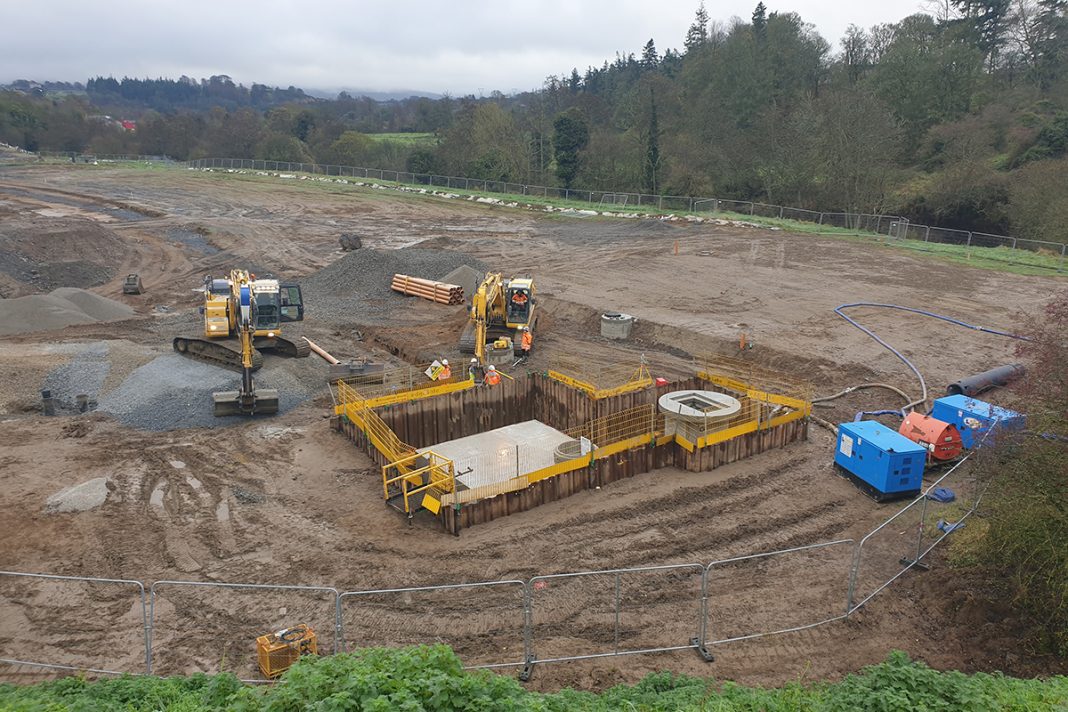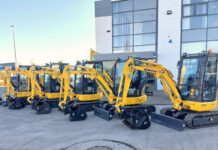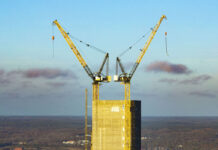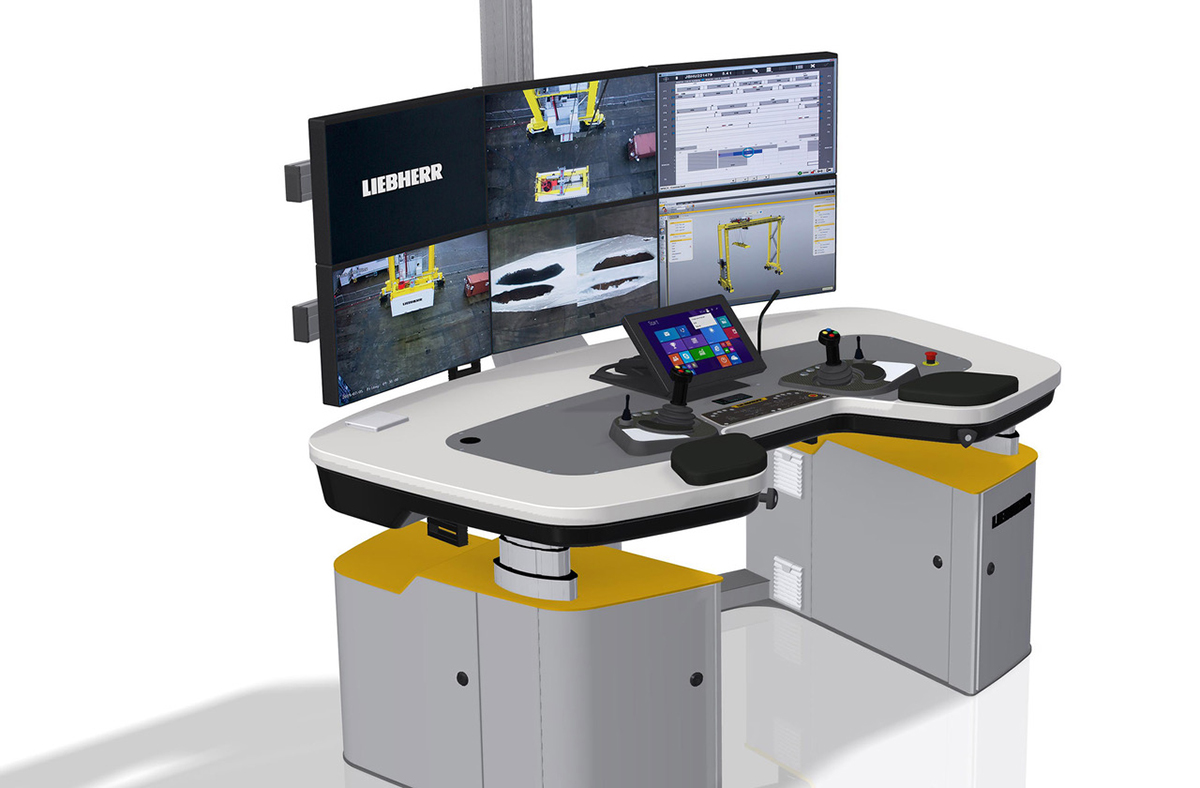Groundforce has supplied its KD6 steel sheet piles and modular hydraulic Mega Brace frames to support a deep excavation for housebuilders Ballymore who are building a large mixed-tenure housing development at the village of Ballymore Eustace, County Kildare, on the banks of the River Liffey.
Called River Walk, the project comprises a variety of two, three and four-bed houses plus local amenities, laid out in landscaped grounds between the river and the existing village.
One essential part of the development’s infrastructure is the drainage system, comprising a storage tank and sump to collect foul water and pump it up into the main sewer. Comprising two precast concrete units, this system was installed in two deep back-to-back excavations measuring 13m in length and 8m wide.
“The ground conditions were very challenging,” says Colin Comerford, site foreman for Tower Civil Engineering, which has the contract for all the groundworks and drainage on the project.
“The excavation was only about 30m from the river, so the water table was very high. Plus, the ground is very loose and sandy down to 3m and mostly just gravel below that,” he explains.
Structural support was therefore crucial in the installation of the two concrete tanks and Tower Civil Engineering turned to Groundforce for a solution. A steel sheet-piled cofferdam was essential to hold back the loose ground but the side-to-side bracing usually employed to withstand the high ground pressures was not an option because the excavation had to be completely clear to allow the two large precast tanks to be lifted in.
Groundforce therefore chose to install its hydraulic Mega Brace frame at three levels around the perimeter of the excavation to support the sheet piles.
“The biggest challenge for us was the fact that the two excavations were at different formation levels – 5.81m and 4.75m – so we had to design the Mega Brace frames to suit both levels,” says Groundforce area manager Jason Hunter.
That required a staggered cofferdam using KD6 steel sheets in lengths of 5m and 7m.
“The frames also had to be staggered to get the right levels and avoid clashing with the pipes that run through both tanks,” explains Jason.
The gravelly ground and high water table meant problems with flooding in the excavation, which once complete, required construction of an insitu concrete base. To manage this, Tower Civil Engineering had two dewatering pumps – one 6” and one 4” – running constantly.
The excavation was completed early this summer and the two tanks installed by crane with no difficulty.
“We’re very, very happy with the solution provided by Groundforce,” says Colin. “It all went without a hitch but Jason was always available if we needed help or advice.”












